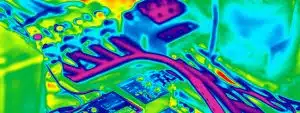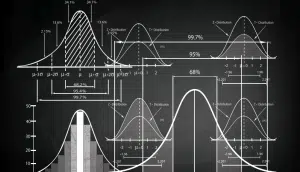Introduction The exposed surface area of many of today’s high-powered electronic packages is no longer sufficient for the removal of the heat generated during normal operation. Heat sinks are a commonly-used, low cost means of increasing the effective surface area for dissipating heat by means of convective air cooling. While the use of a heat sink lowers the fluid-side … [Read more...]
Thermal Modeling of a Silicon Germanium (SiGe) Radio Frequency Integrated Circuit (RFIC) for Wireless Communications
The creation, transport and storage of digital information are growing at rates of 40% to 50% annually, with video, mobile broadband, and machine-to-machine communication being the main drivers. The implementation of 5G wireless networks is enabling this growth and heralding a new era of revolutionary applications and functionality due to bandwidth increases and communication … [Read more...]
Statistics Corner: Modifying Sample Size
ABSTRACT Reliability verification often requires that a specific number of components be tested to a predetermined level of testing to demonstrate that none of the samples fail. This article describes a statistical approach for justifying the use of fewer samples by subjecting them to a more severe level of testing. BACKGROUND Reliability verification often includes … [Read more...]
Statistics Corner: Probability
Statistical analysis is needed because data always have some degree of uncertainty; a value that we determine from a single measurement, or even set of measurements, is not necessarily going to tell us exactly what value we will determine with additional measurements. Statistical analysis uses the mathematics of probability to create tools that we can use to deal with … [Read more...]
Statistics Corner: Weibull Distribution
A little over a pandemic ago, the first article in this series on statistical analysis mentioned that a fundamental aspect of statistics is that one assumes a mathematical model that describes the distribution of a data set and then uses that model to estimate the probability that a given value or set of values will occur [1]. This allows us, for example, to estimate whether … [Read more...]
- « Previous Page
- 1
- …
- 15
- 16
- 17
- 18
- 19
- …
- 481
- Next Page »









